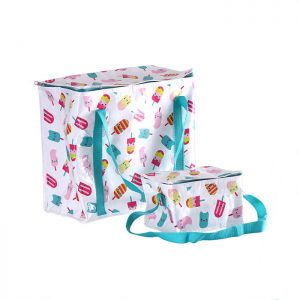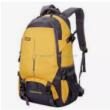Adapting your rucksack for every season requires considering the varying weather conditions, activities, and needs that each season brings. Here’s a guide to help you choose a versatile rucksack that can be adapted for all seasons:
Features to Look for in a Season-Adaptable Rucksack:
- Size and Capacity: Choose a medium-sized rucksack with enough capacity to hold your essentials for each season. A capacity between 20 to 40 liters is often a good range.
- Versatile Design: Opt for a rucksack with a design that works well in different environments. Neutral colors and classic styles tend to be more versatile.
- Weather Resistance: Look for a rucksack with water-resistant or waterproof materials to protect your belongings from rain and snow.
- Adjustable Straps: Adjustable shoulder and hip straps ensure a comfortable fit regardless of the clothing layers you’re wearing.
- Modular Organization: Multiple compartments and pockets allow you to organize your gear effectively, regardless of the season.
- Padded Laptop Compartment: If you carry a laptop, choose a rucksack with a padded compartment that fits your device’s size.
- Breathable Back Panel: A breathable back panel helps prevent excessive sweating during warmer seasons.
Adapting for Different Seasons:
Spring:
- Light layers: Pack a lightweight jacket or raincoat, a hat for sun protection, and an umbrella.
- Rain cover: Ensure your rucksack has a rain cover to protect your belongings from spring showers.
- Comfortable sneakers or hiking shoes for outdoor activities.
Summer:
- Hydration system: Carry a hydration reservoir or water bottles to stay hydrated in the heat.
- Sun protection: Include sunglasses, a wide-brimmed hat, sunscreen, and lightweight, long-sleeve clothing for sun protection.
- Swimsuit and towel for beach trips or outdoor swimming.
Fall:
- Warmer layers: Pack a light sweater, scarf, and gloves as temperatures start to drop.
- Extra storage: If you enjoy fall hikes, make sure your rucksack has extra space for additional layers and snacks.
Winter:
- Insulated layers: Choose a rucksack that can accommodate thicker clothing layers for warmth.
- Cold-weather accessories: Include a beanie, gloves, and a neck warmer to stay cozy.
- Extra protection: Ensure your rucksack has waterproof zippers and materials to protect against snow and slush.
Additional Tips:
- Seasonal Packing List: Create a seasonal packing list to ensure you have the right clothing, accessories, and gear for each season.
- Layering: Instead of carrying bulky clothing, focus on layering to adapt to changing temperatures.
- Adjustable Gear: Choose gear and accessories that can be adjusted, such as hats with adjustable sizing or jackets with zip-off sleeves.
- Regular Check and Cleaning: Regularly inspect your rucksack for wear, tear, and dirt. Clean it after each season to remove dirt and debris.
- Consider Different Attachments: Some rucksacks allow you to attach additional gear like trekking poles, ice axe loops, or bike attachments, making them adaptable to different activities.
Remember, the key is to choose a versatile rucksack that provides you with the necessary features and adaptability to comfortably carry your essentials throughout the year, no matter the season.


























